Smithing - Introduction | Crafting
Last update:
This page of The Elder Scrolls V: Skyrim guide includes basic information on blacksmithing - one of the crafting categories in the game. Our tutorial also offers comparisons of woven, draugr, and iron objects that can be made based on blacksmithing.
Introduction

Smithing is a subject that should interest primarily full or partial warriors, however it's not restricted to characters that represent this particular style of play. The main principals of smithing are:
- creating new weapons and armors
- improving existing weapons and armors (the ones from the main character's inventory)
Various smithing stations are used to perform all the things mentioned above and it's important to know that you don't have to own any of them. Nothing is stopping you from visiting one of the blacksmiths living in Skyrim. They won't mind sharing their place of work with you and they won't even demand any money for granting you complete access. If you don't want to waste too much time searching for blacksmiths then you may go to Riverwood (screen above) or to Whiterun (the blacksmith there operates to the north of Jorrvaskr).
Important - The atronach forge is considered an entirely different type of crafting so it's not supposed to be associated with smithing. This topic is covered in Other types of crafting section of the guide.
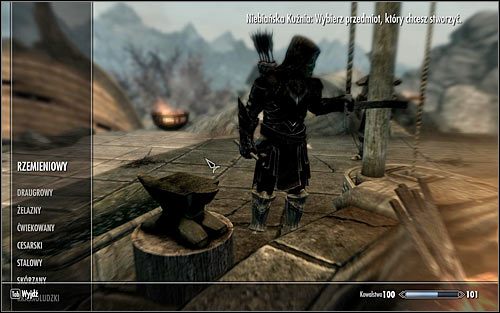
Weapons and items can be created in the same place and it's done by interacting with a blacksmith's forge. Once you've done that the game should display a list of all categories of items you're allowed to choose from. The list contains five categories when you start the game - hide, iron, studded, leather and jewelry. This means you can create items from these groups without any preparations, however in order to unlock better types of things you must invest in perks from the Smithing skill tree. A detailed description of this skill category can be found in the Character development chapter of the guide and make sure you've done that before reading this section any further. If you're more interested in creating light armors you should unlock elven and glass categories of items and if you're more interested in creating heavy armors you should unlock dwarven and orcish categories of items. Best objects can be created after unlocking daedric and dragon categories.
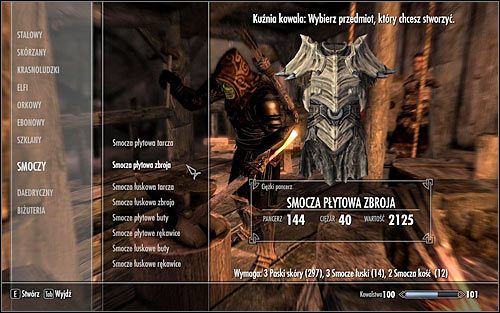
After you've chosen the item category you're interested in you must also pick an object from the list. The next step is to find out more about the object of your desire. The games always lists materials needed to manufacture it and its exact properties. You can't change the properties, however the quality of the items you're creating depends on your current Smithing skill. This mean you should start with creating less valuable objects and you should manufacture them in large numbers in order to develop the skill, especially since finding skill books and paying for lessons can be costly and/or time consuming. I wouldn't recommend trying to craft the best items as soon as they're available, because you'd just be wasting your materials on objects that can have much better properties.
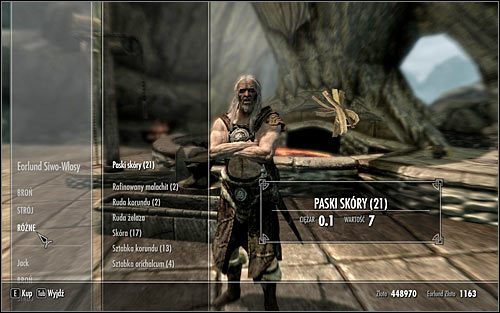
You shouldn't have big problems collecting materials needed for creating new weapons and armors. Most of the materials (including leather and ingots) are usually found while exploring various types of ruins, dungeons, caves and mines. There are of course some exceptions. Dragon bones and dragon scales are obtained by examining the remains of defeated dragons. You may also have some issues with collecting daedra hearts. The most obvious solution in this case is examining bodies of killed dremora creatures, but since they rarely appear in the game you may have to consider other methods. Thankfully the game doesn't force you to acquire all materials on your own, because you may purchase most of the needed supplies directly from blacksmiths (screen above). You should also know that you can manufacture some of the materials using various crafting stations. For example, leather and leather stripes can be created with the help of tanning racks and ingots can be created with the help of smelters. Make sure to consult the Other types of crafting section to find out how these actions work and what types of materials can be manufactured.
Don't forget that most smithing materials weigh a lot, so you shouldn't carry them with you during your normal journeys. It's best to stash them in chests when they're not needed and you can for example use a chest located in one of the homes you've purchased or in one of the quarters you've been assigned to after joined an organization (Companions, College of Winterhold etc).
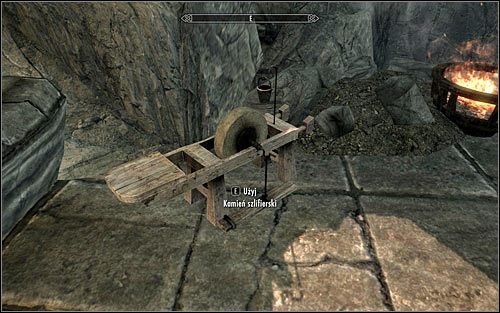
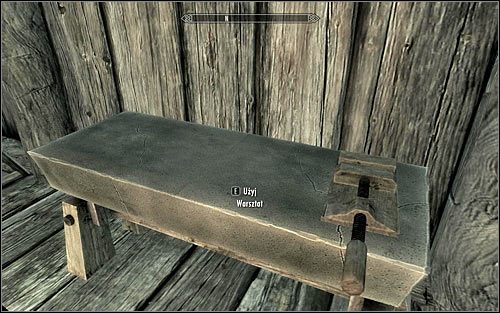
Like I've already said, smithing is not only about creating entirely new items, but also about upgrading the items you already have. There are two types of smithing stations that are responsible for making this happen. Grindstones are used to upgrade weapons and workbenches are used to upgrade armors (screens above). Once you've interacted with a station of your choosing the game will present you with a list of the objects from your inventory you're allowed to improve. Sadly the entire process offers very little space for making changes, especially since you can't choose what type of an upgrade you'll receive. Still, you shouldn't ignore these actions. Upgraded items can become even more useful to you or you may as well decide to sell them with a high profit. Improving objects from your inventory is also a good idea if you're also planning to enchant them later in the game, because you'll have a much better item to start with.
Important news - you can't upgrade magical items until you've unlocked Arcane Blacksmith perk!
You are not permitted to copy any image, text or info from this page. This site is not associated with and/or endorsed by the Bethesda Softworks or Bethesda Softworks. All logos and images are copyrighted by their respective owners.
Copyright © 2000 - 2025 Webedia Polska SA for gamepressure.com, unofficial game guides, walkthroughs, secrets, game tips, maps & strategies for top games.
